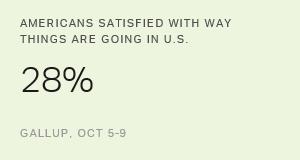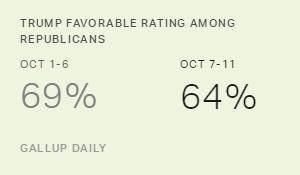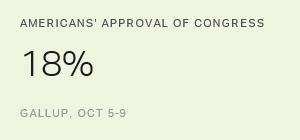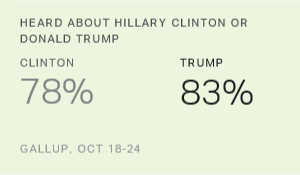Story Highlights
- 28% are satisfied with the direction of the U.S.
- 8% of Republicans and 49% of Democrats are satisfied
- Satisfaction similar to level seen before 2012 election
WASHINGTON, D.C. -- With the presidential election less than a month away, 28% of Americans are satisfied with the way things are going in the U.S. This continues the low satisfaction levels that started near the end of the George W. Bush administration and have persisted under President Barack Obama. Satisfaction remains significantly below the historical average of 37% since Gallup began measuring it in 1979.

Americans' current level of satisfaction is similar to where it has been for most of 2016, with the notable exception of July. That month, 17% of Americans were satisfied according to the July 13-17 poll, conducted shortly after incidents in which police officers killed black men in Louisiana and Minnesota, and after five police officers in Dallas were fatally shot. July's satisfaction rating was the lowest since October 2013. By August, with news coverage focused more on other events such as the political conventions, satisfaction rebounded to the levels seen before July.
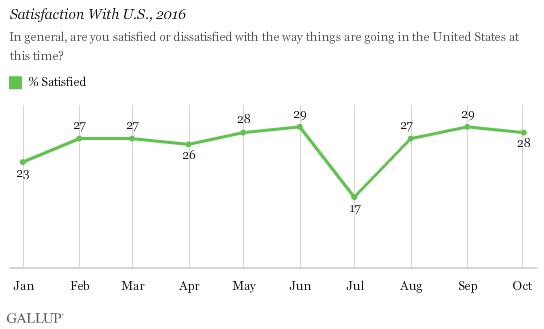
Americans' Satisfaction Similar to a Month Before 2012 Election
Hillary Clinton has said she is the only candidate who will continue Obama's policies, so her supporters might be worried that less than a third of Americans are satisfied with the country's direction near the end of Obama's second term. But a month before the 2012 election, in which Obama handily defeated Mitt Romney, the U.S. satisfaction level was 30%, similar to today's figure. Satisfaction did rise slightly to 33% immediately before the election, possibly because Americans approved of the way Obama handled the effects of Superstorm Sandy.
Heading into the Nov. 8 general election this year, 49% of Democrats, 24% of independents and 8% of Republicans are satisfied with the country's direction. Republican numbers are almost identical to four years ago -- when 7% were satisfied. Democrats (53%) and independents (29%) were slightly more likely to be satisfied in October 2012 than they are now.
Bottom Line
The finding that fewer than one in three Americans are satisfied with the way things are going in the U.S. could appear ominous for the Democratic Party's chances of holding on to the White House in 2016. But satisfaction today is similar to what it was four years ago, when Obama won a second term. So while Clinton may pin her hopes for winning on convincing Americans of the need to continue with the course Obama has set, she would also benefit from convincing voters she can improve on what Obama has accomplished.
On the other hand, Republican Donald Trump has been able to focus heavily on his claims about what has gone wrong with the direction of the U.S. under Obama. With seven in 10 Americans expressing dissatisfaction with the nation's course, Trump has a large audience who agrees with his contention that the country is on the wrong track, even if many may not agree with his explanations for why that is the case. Trump's challenge is to convince Americans that he would be able to make things better in the future if elected.
In addition to influencing the outcome of the election, Americans' low satisfaction level could affect voter turnout on Nov. 8. When citizens are frustrated with the way things are going in the nation, they may be motivated to vote for change. Alternatively, their frustration could discourage them from voting. Gallup research from September found Americans were less sure they will vote in this year's election than they were in each of the past four presidential elections. One reason voters may be less inclined to vote despite high dissatisfaction levels is their dislike of the two candidates. Both Clinton and Trump have historically low favorability ratings.
Historical data are available in Gallup Analytics.
Survey Methods
Results for this Gallup poll are based on telephone interviews conducted Oct. 5-9, 2016, with a random sample of 1,017 adults, aged 18 and older, living in all 50 U.S. states and the District of Columbia. For results based on the total sample of national adults, the margin of sampling error is ±4 percentage points at the 95% confidence level. All reported margins of sampling error include computed design effects for weighting.
Each sample of national adults includes a minimum quota of 60% cellphone respondents and 40% landline respondents, with additional minimum quotas by time zone within region. Landline and cellular telephone numbers are selected using random-digit-dial methods.
View survey methodology, complete question responses and trends.
Learn more about how the Gallup Poll Social Series works.
